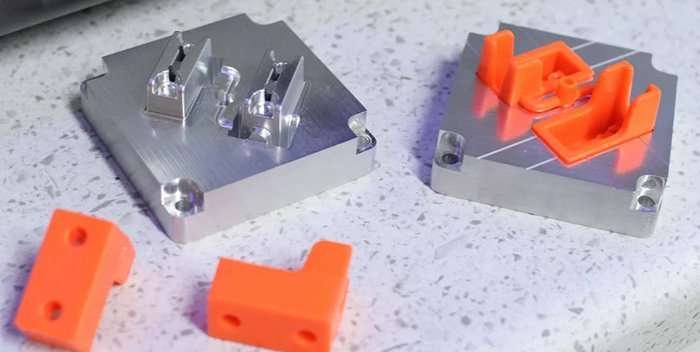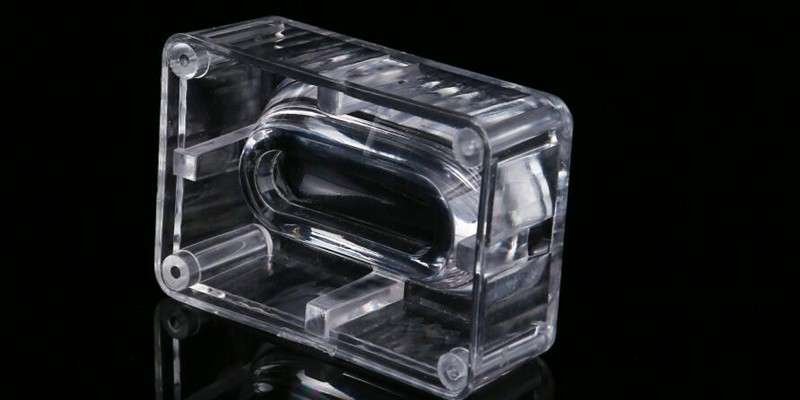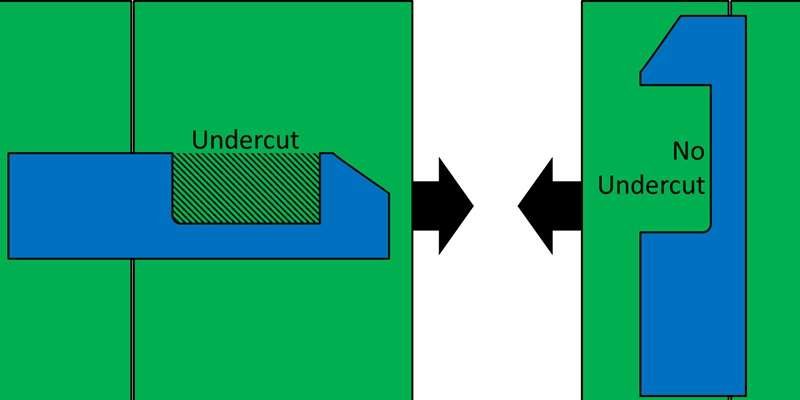Industries that deal with plastic products operate on a competitive ground and getting a product to market on time may determine your success. As a result, many businesses are leveraging low-volume injection molding technology to produce a small number of plastic products in the shortest time.
Low-volume plastic molding has a widespread use across various industries. However, it is important to understand what it entails and when to use it. This article discusses how low-volume plastic injection molding works, its benefits, and tips for a seamless process.
Table of Contents
ToggleWhat is Low Volume Injection Molding?
Low-volume injection molding is a rapid manufacturing process that produces a small number of plastic parts in a single production run. It follows the typical injection molding process, i.e., melting the plastic material, injecting it into a mold, cooling so the molten plastic takes the mold shape, and ejection.
It has a widespread use in rapid prototyping and short-run manufacturing. On the one hand, in rapid prototyping, low-volume plastic parts are made to test their final product’s functionality and aesthetic value. On the other hand, in short-run manufacturing, low-volume plastic molding is applicable in making parts of small volume to put them into the market faster.

How Does Low Volume Injection Molding Work?
The process involved in low-volume plastic molding is similar to that of traditional injection molding. It includes the steps explained below:
Mold Design and Manufacturing
The first step in low-volume injection molding is to design the mold. Afterward, the mold and its components are made using 3D printing or CNC machining. After manufacturing the mold, parts like the ejector system are installed and the mold is loaded on an injection molding machine.
Mold Clamping
Now, use the clamping system of your choice to hold the mold in place. Close the gap between the mold halves.
Note: the clamping force should be equal to the injection force for the mold to prevent disruptive movement.
Injection and Cooling
The operator places plastic pellets inside the injection barrel. As the plastic melts in the barrel, it is mechanically forced into the mold cavity. The plastic material cools and solidifies in the mold cavity depending on the plastic type.
Demolding and Finishing
As the clamping plate moves backward, the mold halves open and the ejector pin pushes out the final part. You can apply release agents in cases of undercut injection molding. Trim off excess plastic and use suitable finishing processes as needed.
Benefits of Low-Volume Plastic Injection Molding
The following are some of the many benefits of using low-volume plastic injection molding for manufacturing.

Cheaper Mold Cost
The mold tooling costs short run injection molding are comparatively lower. Unlike the traditional injection molding process that uses hardened steel, low-volume injection molding uses aluminum which is a more economical approach.
Quick Turnaround Time
Small-batch plastic injection molding ensures a quick turnaround time. With this process, you can complete an order on time and start making sales immediately.
Flexibility
Low-volume injection molding offers flexibility in manufacturing. Machinists can easily adjust designs without a huge financial burden to produce more complex parts. Furthermore, it serves to test a product before mass production. This is because one can receive feedback on how to improve a part’s functionality.
High-Quality Parts
The use of this technique is particularly advantageous when producing high-quality parts with lustrous surface finish. Aluminum molds peculiar to low-volume plastic molding dissipate heat faster than steel molds. As a result, low-volume plastic parts have fewer defects because of their fast-cooling rate.
Considerations and Tips for Low-Volume Injection Molding
Though low-volume plastic molding is an efficient manufacturing process, it is important to maximize it and get the most out of your investment. Here are some tips to consider when using this technique.
Choose the Right Injection Molding Material
Getting the most out of low-volume injection molding involves using the right thermoplastic. You should consider the application of the intended part and use it to choose a material with the perfect functional properties (such as strength, thermal/chemical resistance, durability) and aesthetic properties (e.g., color).
Optimize Wall Thickness
Wall thickness should be consistent (0.04-0.14 inches) across the low-volume plastic part. Thick walls can lead to warping, sinking or other defects while thin walls have lesser structural integrity, are sensitive to temperature changes, and are prone to defects such as warping.
Remove Sharp Internal Corners
Sharp internal corners can compromise the injection molded part’s integrity. As a result, it is better to use vertexes or rounded edges (radii) for improved moldability.
Use Draft Angles
Using draft angles creates low injection molded parts with tapered edges, reduces friction during demolding, and prevents mold/part damage. As a result, this will enable easier removal from the mold.

How to Choose the Right Low-Volume Injection Molding Manufacturer?
The professional low-volume plastic molding manufacturer will streamline the whole process and make everything easier. Consider the following factors before choosing a third-party manufacturer.
Expertise
The ideal contract manufacturer should have enough experience and industry knowledge. An experienced manufacturer will have relevant skills, advanced knowledge, and the capability to produce quality parts. Additionally, they must have a record of accomplishment in meeting injection molding tolerance.
Production Capabilities
The right low-volume injection molding service should be able to achieve the maximum possible output for small-scale or medium-scale production. Furthermore, the company should have the right equipment and be able to scale up when needed.
Cost Considerations
One of the reasons most people use low-volume injection molding is to cut costs. You may want to choose a contract manufacturer that fits into your budget. Different companies have different prices. However, one should not compromise quality to reduce injection molding costs.
Supply Chain Management
The company you are going for must carefully manage every aspect of business that involves procuring raw materials and other resources. A properly managed supply chain prevents the incidence of recall and associated costs. Additionally, it helps to avoid delays and under or oversupply of materials.
Customer Service and Communication
Make sure that the injection molding company offers 24/7 customer service and support even after the contract has ended. Additionally, the company must keep you updated throughout the manufacturing process. They should not tamper with your designs without adequate communication.
Low-Volume Injection Molding Applications
From medical to automotive, many industries use low-volume injection molding for diverse reasons. The technology is applicable in the following ways.
Bridge Manufacturing
Low-volume injection molding is a means of scaling up manufacturing and production. It serves as a gap between prototyping and large-scale production. By starting with small quantities, you check how the products are doing. If the response is favorable and demand increases, manufacturing more parts is easier as the most important tools and equipment are in place already.
Producing Smaller Series of Products
For businesses new in the industry, low-volume plastic injection molding is ideal for short-run production. Companies may not have enough capital to start large-scale production. In manufacturing, the less you make, the less you spend. When introducing a new product, this technique shortens lead times and minimum investment.
Making Specialty Products
Low-volume plastic injection molding serves as a means of manufacturing custom products or specialty products, i.e., products with unique designs that are peculiar to a company. The manufacturers often adjust the mold designs to accommodate additional features, specifications, and drawings. Using low-volume injection molding increases productivity and enhances the quality of a product.

Low-volume vs. High-volume injection molding: What are the Differences?
The differences between low-volume vs high-volume injection molding are straightforward. The following factors make the two processes distinct
Production Capacity
The main difference between high and low-volume injection molding is the production quantity. Low-volume plastic injection molding comes in a limited quantity and may range between 100 to 10,000 parts. On the other hand, high-volume injection molding produces 10,000 parts and above.
Mold Type
The type of mold tooling can also be a difference. Oftentimes, steel molds are used for high-volume plastic injection molding. This is because steel is stronger and reusable. Aluminum molds are common with low-volume injection molding. Aluminum is softer and less expensive. Additionally, it is easier to machine aluminum so production can start almost immediately.
Automation
A key difference between high and low-volume plastic injection molding is the level of automation it requires. High-volume injection molding needs to be highly automated. It works continuously to increase production.
Unit Costs
High-volume injection molding reduces the cost of a single part. Most manufacturers give discounts as the number of parts increases. Producing in large quantities is more economical and helps you make more profits in the long run.
XinCheng Offers Low-volume Injection Molding Services
Looking for low-volume plastic injection molding services? XinCheng is your reliable custom injection molding service provider. We employ advanced mold design and engineering techniques to ensure the production of high-precision components with tight tolerances.
At XinCheng, we work closely with our customers to understand their specifications and design requirements. We also have professional engineering support in every stage of low-volume injection molding manufacturing for your projects.
Conclusion
Injection molding has been known as a mass-production technique for years. This definition has changed as one can now use it to produce small quantities of plastic parts. This reduced number of parts increases efficiency and shortens lead times.
FAQs
What is the minimum quantity for injection molding?
The standard minimum quantity for injection molding is 500 parts.
How much does a low-volume injection mold cost?
The cost of a low-volume injection mold varies and may depend on the manufacturing technique used, the size, and the complexity of the design. It can range from $100 to $100,000.
What is shot capacity in injection molding?
Shot capacity, commonly referred to as injection capacity, is the total volume of the plastic material that the screw injects into the mold in one cycle.
Which mold is used for low-quantity work?
You can use either a single or multi-cavity aluminum mold for low-quantity orders. Single cavity injection mold produces a single unit and is preferred. Multi-cavity mold creates more than one part and speeds up production.



